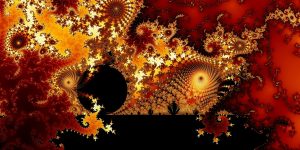This project is called ‘Immersive: Playing with Fauna’ by Dr. WooHoo! While looking for generative art, I was immediately drawn by the person’s name. I don’t know if that is his actual legal name or his pseudo name, but I just thought that it was a great choice in a marketing standpoint. The art is very unique and innovative to say the least- It is an immersive art experience where an audience can interact with the visual fauna that is floating around. Even though it is in equilibrium when untouched for a while, it enters a dynamic dance engaged by people. I admire the fact that it is so unique yet refined and has great reaction time with minimal latency. It is difficult for interactive software to be so detailed and intricate while having little latency.
I suppose that the algorithms that are in play for this piece involve two parts, one for standard behavior when in equilibrium, and one that is called when there is a stimulus. I felt that the function that is called is very similar to mouseX and mouseY except with camera coordinates. I think that the artist’s true genius (artistic sensibilities) comes into play when he is able to convey fun and excitement into an artform.
Source Link: https://www.behance.net/gallery/44562239/Immersive-Playing-with-Fauna
![[OLD FALL 2018] 15-104 • Introduction to Computing for Creative Practice](https://courses.ideate.cmu.edu/15-104/f2018/wp-content/uploads/2020/08/stop-banner.png)

